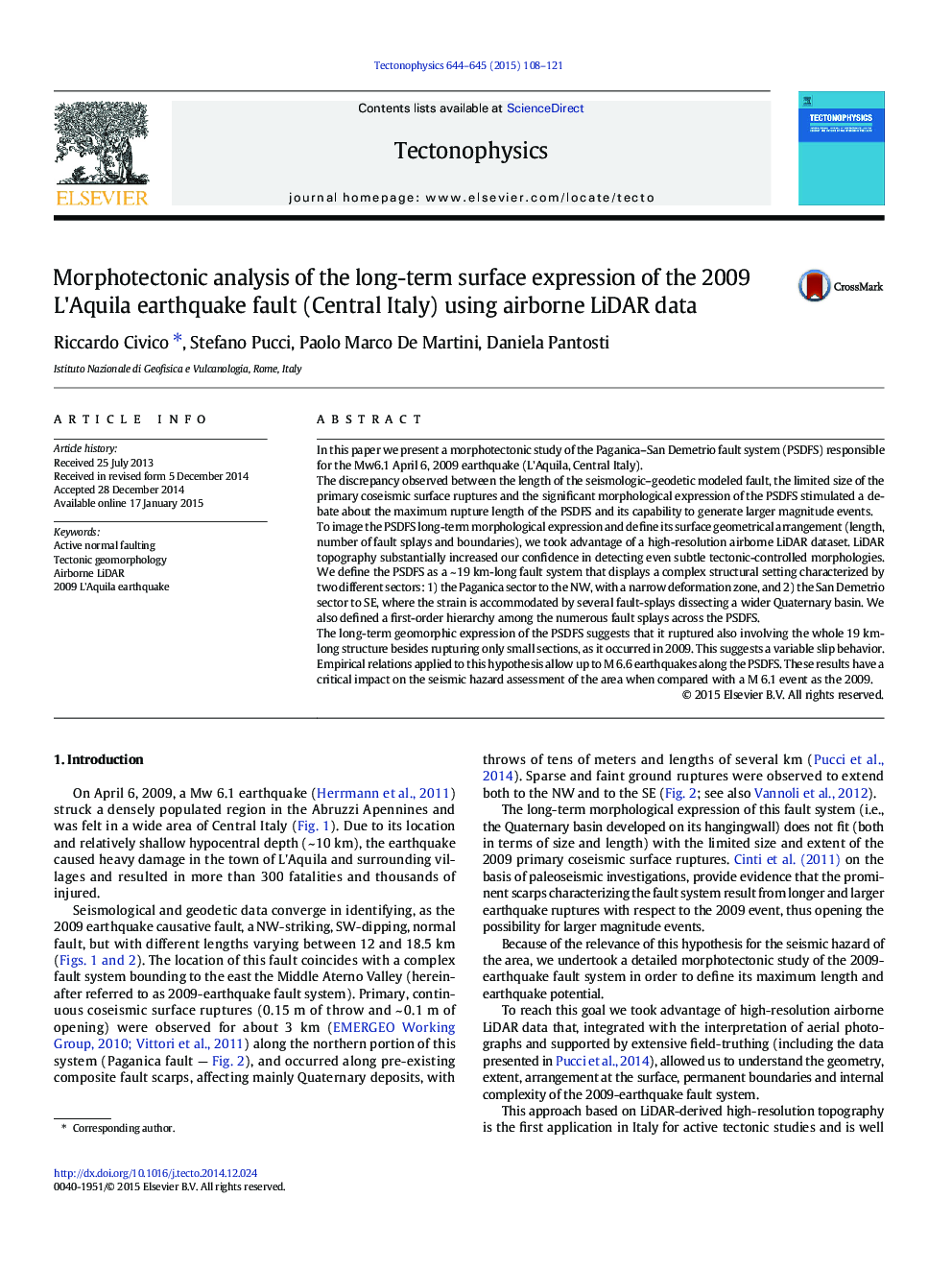| کد مقاله | کد نشریه | سال انتشار | مقاله انگلیسی | نسخه تمام متن |
|---|---|---|---|---|
| 4691746 | 1636748 | 2015 | 14 صفحه PDF | دانلود رایگان |

• The PSDFS shows a complex structural setting, with several normal parallel splays.
• We set the fault system boundaries defining an ~ 19 km-long structure.
• The PSDFS throw profile approximates a symmetric bell-shaped curve (single fault).
• Two aligned fault splays account for most of the Quaternary deformation.
• Master ruptures of the PSDFS could produce earthquakes with M up to 6.6.
In this paper we present a morphotectonic study of the Paganica–San Demetrio fault system (PSDFS) responsible for the Mw6.1 April 6, 2009 earthquake (L'Aquila, Central Italy).The discrepancy observed between the length of the seismologic–geodetic modeled fault, the limited size of the primary coseismic surface ruptures and the significant morphological expression of the PSDFS stimulated a debate about the maximum rupture length of the PSDFS and its capability to generate larger magnitude events.To image the PSDFS long-term morphological expression and define its surface geometrical arrangement (length, number of fault splays and boundaries), we took advantage of a high-resolution airborne LiDAR dataset. LiDAR topography substantially increased our confidence in detecting even subtle tectonic-controlled morphologies. We define the PSDFS as a ~ 19 km-long fault system that displays a complex structural setting characterized by two different sectors: 1) the Paganica sector to the NW, with a narrow deformation zone, and 2) the San Demetrio sector to SE, where the strain is accommodated by several fault-splays dissecting a wider Quaternary basin. We also defined a first-order hierarchy among the numerous fault splays across the PSDFS.The long-term geomorphic expression of the PSDFS suggests that it ruptured also involving the whole 19 km-long structure besides rupturing only small sections, as it occurred in 2009. This suggests a variable slip behavior.Empirical relations applied to this hypothesis allow up to M 6.6 earthquakes along the PSDFS. These results have a critical impact on the seismic hazard assessment of the area when compared with a M 6.1 event as the 2009.
Journal: Tectonophysics - Volumes 644–645, 16 March 2015, Pages 108–121